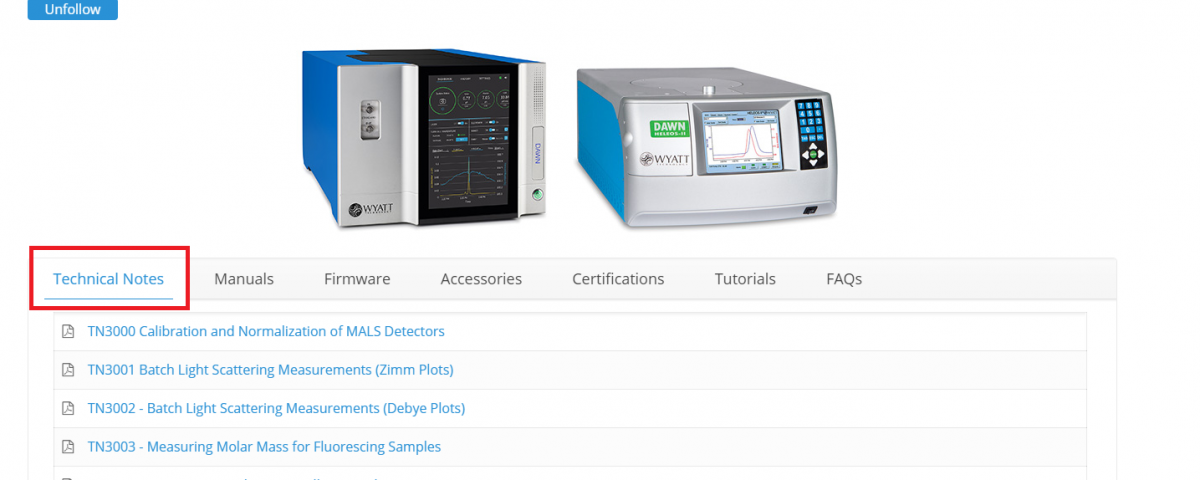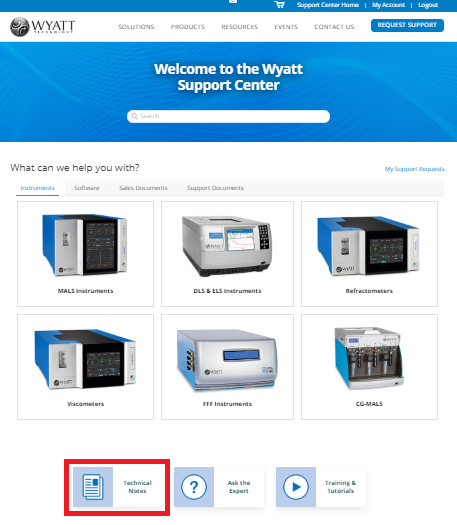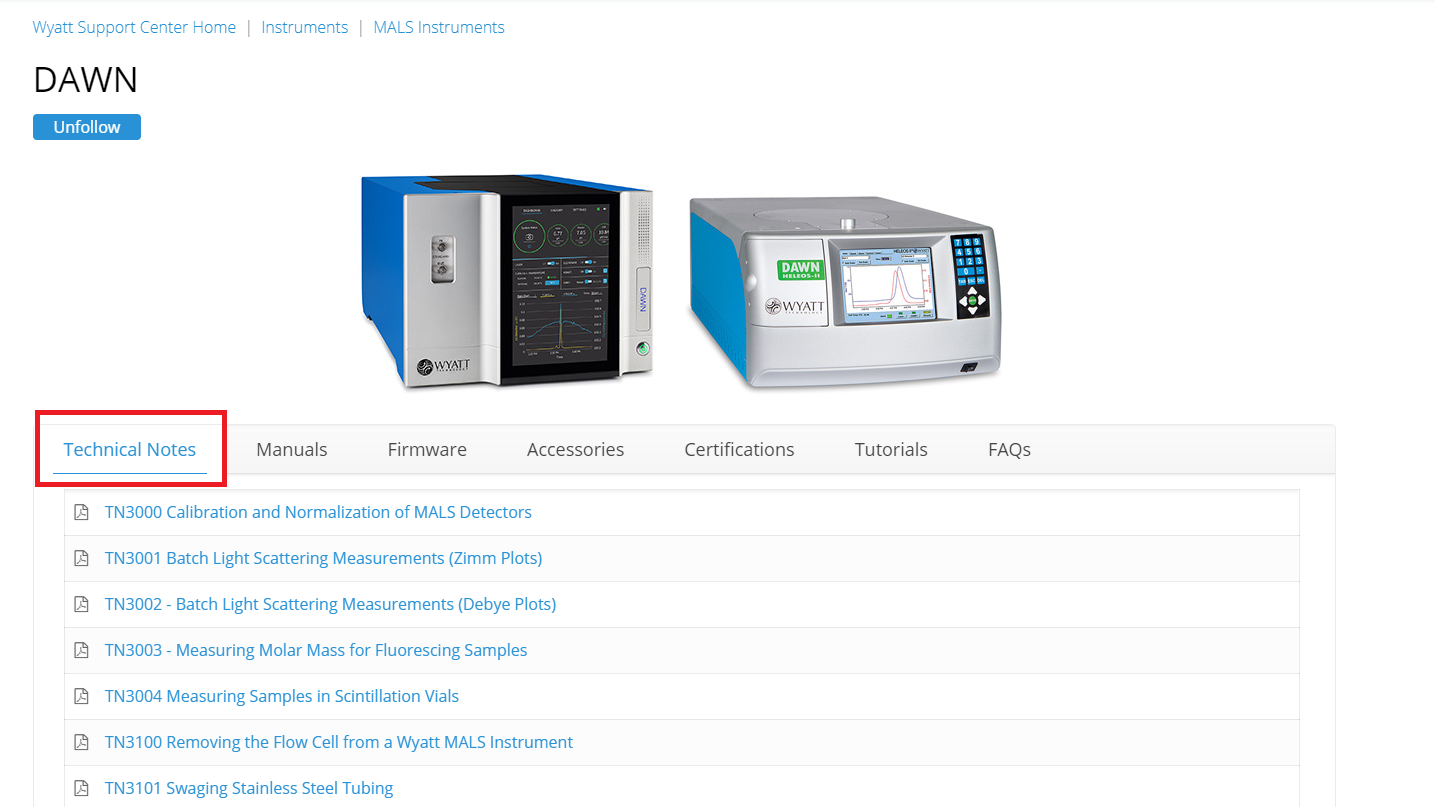Discover Tips and Tricks with our Technical Notes

Already a Wyatt customer? Our technical notes provide step-by-step instructions and tips for how to get the most out of your instrumentation:
- Quick guides for setting up your instrument or using our software.
- Tips for improving performance
- Best practices for use and care
- Step-by-step instructions for performing advanced analyses on your data such as the Protein Conjugate Analysis or Branching Analysis
- Connection guides for your UHPLC or HPLC
- Troubleshooting guides to keep you up and running
New and Updated Technical Notes
Updated! TN1006 - Performing Protein Conjugate Analysis in ASTRA™ Rev D
This ASTRA method enables you to characterize a wide array of conjugates such as copolymers and PEGylated proteins. The analysis relies on the unique combination of three signals (UV, LS, and RI) to calculate the mass fraction and molar mass of two components of a conjugate. This update adds information on how to validate your analysis using BSA and practice with Thyroglobulin.
New! TN3506 – Molecular Standards for Determining System Constants Rev A
With a broad array of compatible solvents and operating conditions for Wyatt instruments, it can be challenging to identify appropriate molecular standards for instrument validation and determination of system constants, such as photodetector normalization, inter-detector alignment, and band broadening corrections. This technical note provides an overview of calibration and system constants and suggested molecular standards.
New! TN3507 - Moments and Averages Reported by ASTRA Rev A
Multi-angle light scattering detectors (MALS) can determine the molar mass and size of macromolecules; however, these species often have either a continuous distribution of molar mass and size or consist of several discrete populations. In this technical note, learn how molar mass, radius and viscosity moments are calculated in ASTRA and which moments are most relevant to online and batch light scattering techniques.
New! TN6003 – Configuring the Eclipse for Manual Injections Rev A
The typical Eclipse installation with an HPLC utilizes the autosampler to introduce samples and automate sequences of data acquisition; however, there may be times when this set up is not desired and it is preferential to manually inject samples and initiate data collection. This guide details the software changes and physical setup changes that need to be made to either an existing HPLC-SEC setup or an existing HPLC-FFF setup to allow for manual introduction of samples.
You can find technical notes on our Support Center. Simply go to https://www.wyatt.com/support/ and login or register for an account. It’s free for customers! Technical notes are located on their own tile:

You can also find technical notes under each instrument or software application:

